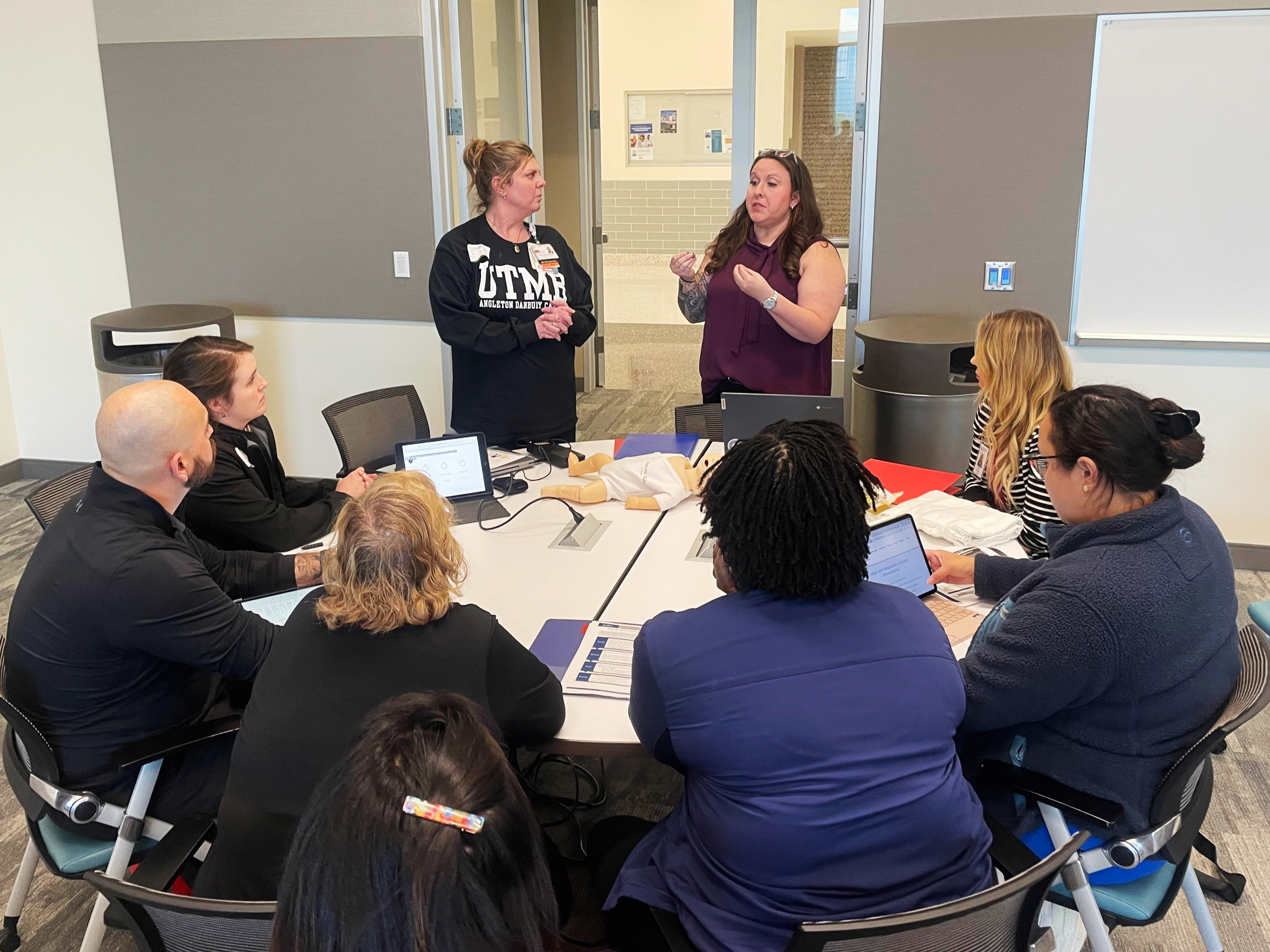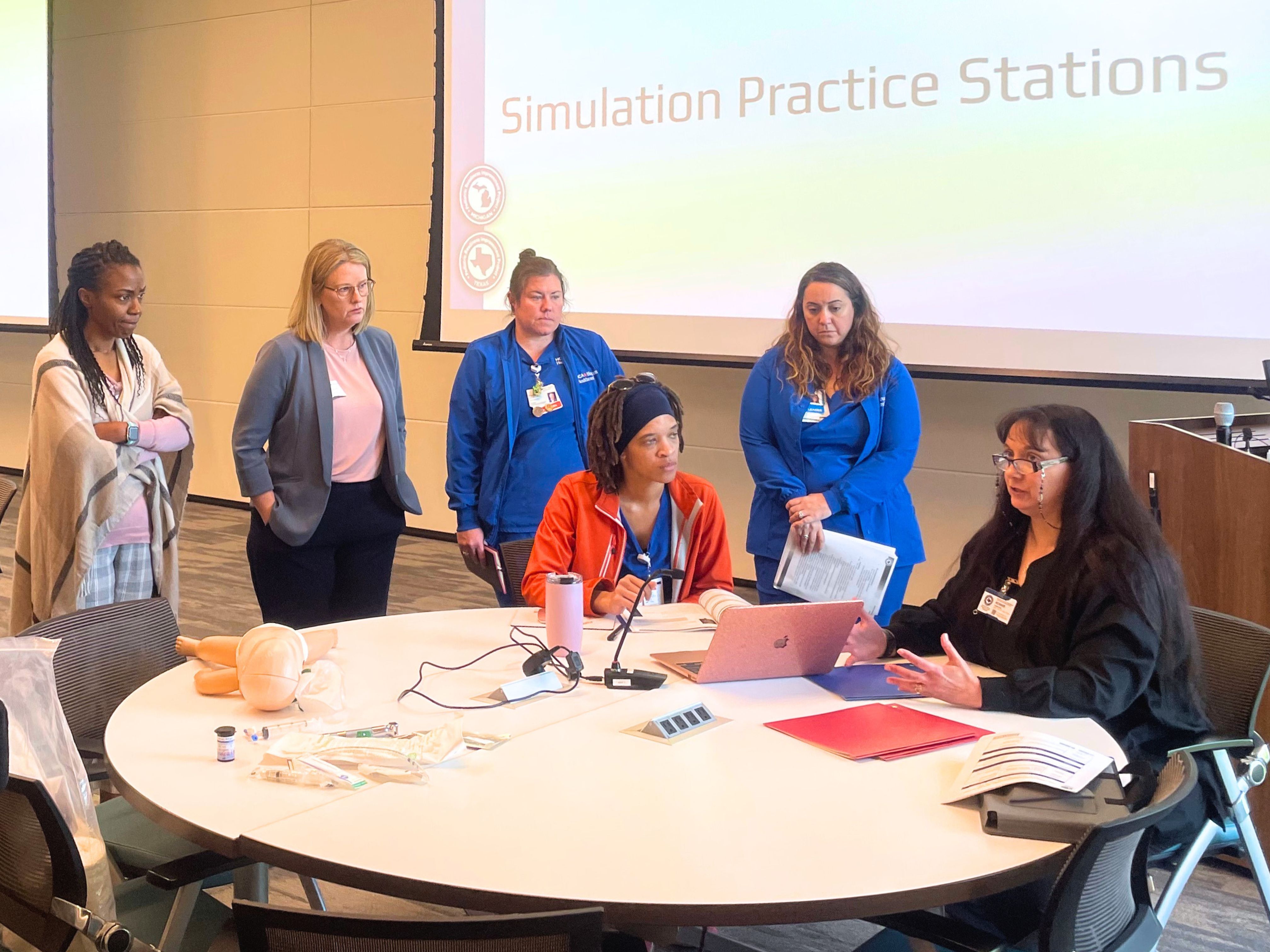Emergency rooms across Texas are raising their standards of care to meet national pediatric readiness standards. The new requirements include having appropriately sized equipment and training for emergency staff on treating children, among other things.

To make sure emergency services in the area are ready, the University of
Texas Medical Branch partnered with Santana Olvera and Ronnie
Hamilton, regional pediatric readiness improvement and simulation
mentors from the Texas Pediatric Readiness Improvement Project and the
East Texas Gulf Coast Pediatric Trauma Council, to host a
“train-the-trainer” simulation facilitator workshop at the UTMB Health
Education Center in Galveston.
The day long training covered quality improvement, simulation trainings and tips to efficiently and effectively inform hospital teams about the coming changes.
“The goal is to support these individuals in championing emergency pediatric care in their facilities,” said Hamilton. “We want them to leave feeling empowered, informed and energized around this cause.”
Nearly 20 percent of children across the state need emergency care each year, according to the Texas Pediatric Readiness Improvement project. However, 80 percent of children end up being treated at general emergency departments that are not designed specifically for children.
“This initiative is part of a much larger collaborative effort to help ensure emergency department clinicians are actively working toward being equipped with the right tools, training and resources for these vulnerable patients,” said Olvera. “It’s a big goal but it’s an important one since sustained pediatric readiness is linked to increased survival in critically ill and injured children.”

According to nationwide surveys conducted, data has proven that emergency departments that have a sustained pediatric readiness program, have shown a 76% lower mortality rate in ill children, 60% lower mortality rate in injured children, and 2,143 children’s lives saved across the U.S. each year.
“While we’ll ultimately have to call on people across various departments and teams including Emergency Medicine, Trauma, and more, to make pediatric readiness initiatives a reality,” said Miranda Culligan, trauma program manager and nurse at UTMB Galveston Campus. “It’s up to individuals like us to usher these efforts along and be informed on best practices.”